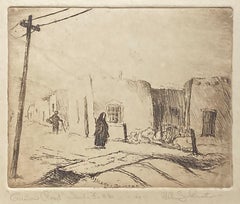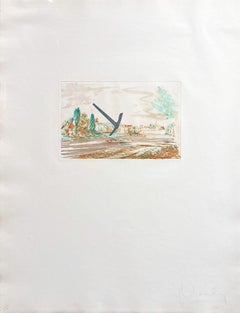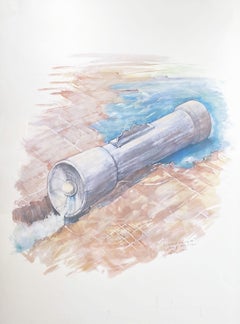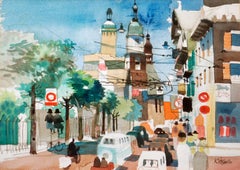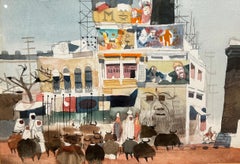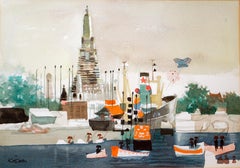Gallery of the Masters Art
20th Century American Modern Landscape Prints
Etching
20th Century American Modern Mixed Media
Etching, Aquatint, Photogravure
20th Century American Modern Abstract Prints
Paper, Lithograph
20th Century American Modern Landscape Drawings and Watercolors
Watercolor
20th Century American Modern Landscape Drawings and Watercolors
Watercolor
20th Century American Modern Landscape Drawings and Watercolors
Watercolor
20th Century American Modern Landscape Drawings and Watercolors
Watercolor
20th Century American Modern Landscape Drawings and Watercolors
Watercolor
20th Century American Modern Landscape Drawings and Watercolors
Watercolor
21st Century and Contemporary American Modern Still-life Prints
Plexiglass, Inkjet
20th Century American Modern Figurative Sculptures
Ceramic
20th Century American Modern Figurative Sculptures
Ceramic
20th Century American Modern Still-life Sculptures
Ceramic
20th Century American Modern Mixed Media
Paper, Mixed Media
20th Century American Modern Animal Prints
Lithograph
1950s Modern Animal Drawings and Watercolors
Paper, Ink, Watercolor
1950s Modern Figurative Prints
Lithograph
1970s Modern More Art
Ceramic
1970s Modern Figurative Prints
Lithograph
1950s American Modern Landscape Drawings and Watercolors
Watercolor
1940s American Modern Landscape Drawings and Watercolors
Watercolor, Paper
Early 20th Century Modern Landscape Drawings and Watercolors
Paper, Watercolor, Gouache
20th Century American Modern More Art
Textile
Late 20th Century American Modern Abstract Paintings
Canvas, Oil
1970s American Modern Abstract Paintings
Emulsion, Polymer
1980s American Modern Abstract Paintings
Canvas, Wood, Mixed Media, Oil, Handmade Paper
20th Century Modern Still-life Drawings and Watercolors
Paper, Watercolor
1970s Modern Abstract Prints
Etching, Aquatint
1960s American Modern Figurative Drawings and Watercolors
Paper, Ink, Watercolor, Pen
1970s Modern Abstract Prints
Etching, Aquatint
1960s Modern Figurative Prints
Lithograph
1960s Modern Figurative Prints
Lithograph
21st Century and Contemporary American Modern Figurative Paintings
Canvas, Acrylic
21st Century and Contemporary American Modern Figurative Paintings
Canvas, Acrylic
21st Century and Contemporary American Modern Figurative Paintings
Canvas, Acrylic
1960s American Modern Landscape Drawings and Watercolors
Paper, Watercolor
Late 20th Century Modern More Prints
Lithograph
1960s Modern Abstract Prints
Linocut
1950s Modern Figurative Sculptures
Ceramic
Mid-20th Century American Modern Abstract Sculptures
Brass, Copper
Late 19th Century American Modern Figurative Prints
Linocut, Woodcut
Mid-20th Century Modern Abstract Sculptures
Bronze
1990s American Modern Figurative Sculptures
Bronze
Late 20th Century American Modern Figurative Sculptures
Bronze
1990s American Modern Figurative Sculptures
Brass, Bronze
1950s American Modern Landscape Drawings and Watercolors
Watercolor
1960s Modern Landscape Drawings and Watercolors
Watercolor
1940s American Modern Still-life Paintings
Glaze, Oil, Egg Tempera, Panel
1940s American Modern Still-life Paintings
Glaze, Oil, Egg Tempera, Panel
Mid-20th Century Modern Figurative Paintings
Canvas, Oil
1980s Modern Still-life Prints
Mezzotint
Mid-20th Century Modern Figurative Paintings
Silk, Ink, Tempera
Late 20th Century American Modern Figurative Prints
Lithograph
Early 2000s Modern Figurative Prints
Lithograph
Mid-20th Century American Modern Figurative Paintings
Egg Tempera, Wood Panel
Late 20th Century Modern Figurative Paintings
Mixed Media
Late 20th Century Modern Figurative Sculptures
Bronze
1930s American Modern Figurative Prints
Woodcut
Late 20th Century Modern Abstract Prints
Screen
Late 20th Century Modern Abstract Prints
Screen
